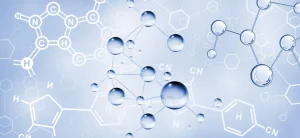Surfactant classification
Surfactant, also known as surfactant, is a compound that can make the surface tension (surface tension) or interfacial tension (interfacial tension) between two kinds of liquids, liquids and gases, and liquids and solids decrease significantly. The molecular structure of surfactants is amphoteric: hydrophilic group at one end, hydrophobic group at the other end; hydrophilic groups are often polar groups, such as carboxylic acid, sulfonic acid, sulfuric acid, amino or amine groups and their salts, hydroxyl, amide, ether bonds, etc., can be used as polar hydrophilic groups; and hydrophobic groups are often nonpolar hydrocarbon chains, such as more than 8 carbon atoms hydrocarbon chains. Surfactants are divided into ionic surfactants (including cationic surfactants, anionic surfactants, amphoteric surfactants), nonionic surfactants, complex surfactants, other surfactants and so on.
![]()
Surfactant molecules have a unique amphiphilic nature: one end of the hydrophilic polar group, referred to as hydrophilic group, also known as oleophobic or oleophobic group, such as -OH, -COOH, -SO3H, -NH2. Due to the short length of this type of group, sometimes figuratively referred to as hydrophilic head. The other end is a lipophilic nonpolar group, referred to as a lipophilic group, also known as a hydrophobic or hydrophobic group, e.g., R- (alkyl), Ar- (aryl). Because of the short length of this type of group, it is sometimes figuratively referred to as a hydrophobic tail. Two types of molecular groups with opposite structures and properties are located at the two ends of the same molecule and are chemically bonded, forming an asymmetric, polar structure, which gives this special class of molecules both hydrophilic and lipophilic, but not the overall hydrophilic or lipophilic properties. This unique structure of surfactants is often referred to as an amphiphilic structure, and surfactant molecules are therefore often called “amphiphilic molecules”.
Properties

Surface Tension Reduction
The reduction of surface tension is the most basic function of surfactants. There is a macroscopic tension in the surface layer of a liquid that causes the liquid surface to shrink to the smallest possible extent, i.e., surface tension. With the addition of a surfactant, the surfactant reduces surface tension by forming a thin film on the surface of the liquid and changing the arrangement of molecules on the surface of the liquid.
![]()
Formation of micelles
Micelles are ordered aggregates of molecules that begin to form in large quantities in an aqueous solution when the surfactant concentration reaches a certain value.
Surfactant dissolved in water, when its concentration is low is monomolecular dispersion or adsorbed on the surface of the solution to reduce the surface tension, and when the concentration of surfactant increases to the solution surface has been saturated and can no longer be adsorbed, surfactant molecules began to be transferred to the interior of the solution (Figure 2a-b). Due to the hydrophobic part of the surfactant molecule and water affinity is small, while the hydrophilic part of the attraction between the larger, when a certain concentration, many surfactant molecules (generally 50 ~ 150) of the hydrophobic part of the molecules will be attracted to each other, together, the formation of aggregates, that is, micelles. Micelles have various shapes, such as spherical, layered, rod-shaped.